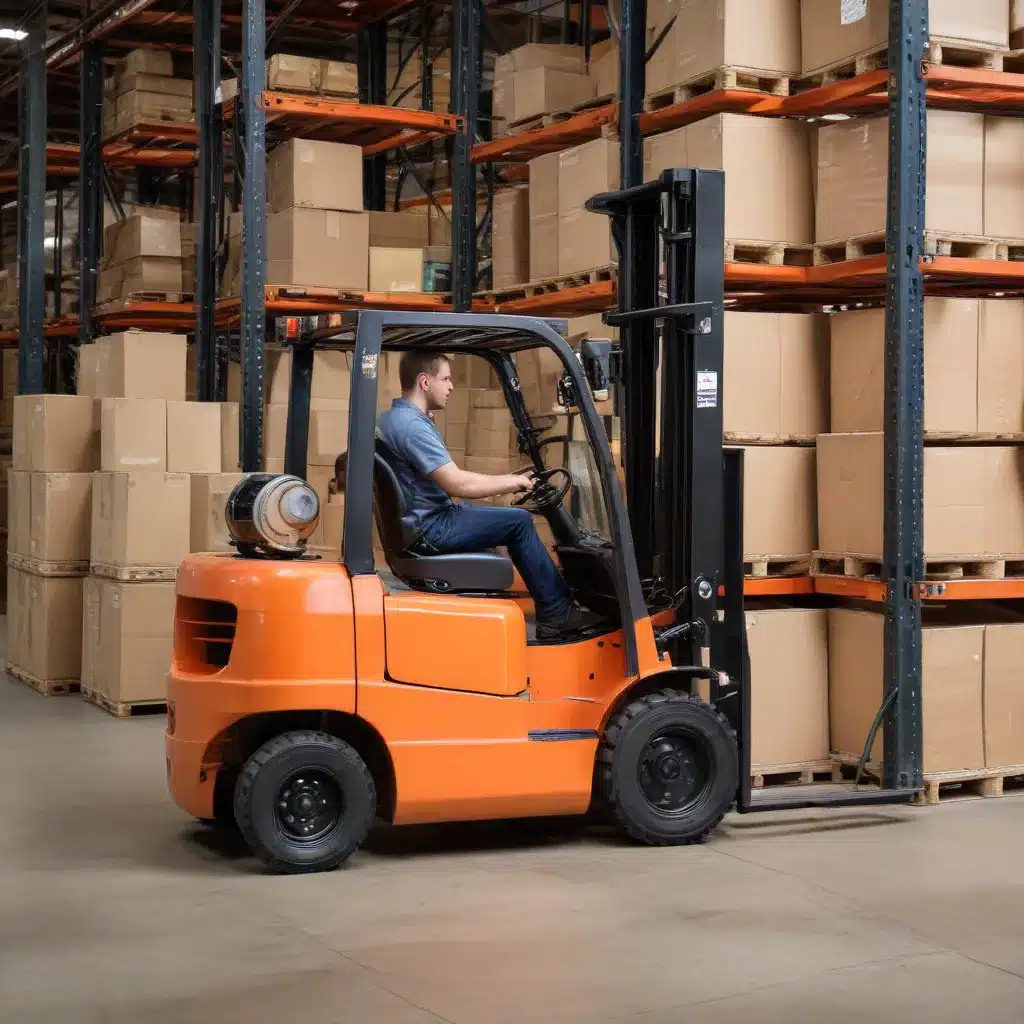
Understanding the Benefits and Trade-Offs of Forklift Leasing
As an experienced industry expert, I’ve witnessed firsthand the critical role that forklifts play in the smooth operations of warehouses, logistics centers, and industrial facilities across the country. Whether you’re managing a fleet of forklifts or evaluating options for your next equipment purchase, the decision to lease or buy can have far-reaching implications for your workplace safety and occupational health programs.
Forklift leasing has become an increasingly popular alternative to outright ownership, offering businesses greater flexibility and potential cost savings. One of the primary advantages of leasing is the ability to upgrade to newer, more advanced models on a regular basis. This can be especially beneficial in industries where technological innovations quickly render existing equipment obsolete, ensuring your workers have access to the safest and most efficient tools for the job.
Moreover, leasing can help businesses better manage their capital expenditures and cash flow. Instead of a large upfront investment, lease payments are typically structured as a monthly or quarterly expense, which can be more easily accounted for in budgeting. This can be particularly useful for small- to medium-sized enterprises that may have limited access to financing for equipment purchases.
Maintaining a Safe and Compliant Forklift Fleet
However, forklift leasing also comes with its own set of considerations, especially when it comes to workplace safety and compliance with occupational health regulations. As an employer, you have a legal and ethical obligation to provide a safe working environment for your employees, and the condition and maintenance of your forklift fleet is a critical component of that responsibility.
When you own your forklifts outright, you have greater control over the maintenance schedule, safety inspections, and operator training. You can ensure that all equipment is well-maintained, that safety features are functioning properly, and that your operators are thoroughly trained and certified in accordance with OSHA standards.
In a leasing arrangement, the responsibility for maintenance and safety may be shared between the lessee (your company) and the lessor (the forklift provider). It’s essential to carefully review the terms of the lease agreement to understand who is responsible for what, and to ensure that the lessor is held accountable for maintaining the forklifts in a safe and compliant manner.
Navigating Regulatory Compliance and Occupational Health Concerns
Beyond the immediate safety concerns, the decision to lease or buy forklifts can also have implications for your broader occupational health program. Regulations such as those enforced by the EEOC may require employers to make reasonable accommodations for employees with disabilities or religious beliefs that could impact their ability to operate certain types of equipment.
For example, an employee who is unable to stand for extended periods may require a forklift with specialized seating or controls. Similarly, an employee whose religious beliefs prohibit the use of certain materials or the performance of specific tasks may need to be assigned to a forklift that aligns with their beliefs.
When you own your forklift fleet, you have greater flexibility to make such accommodations, whether through equipment modifications or job reassignments. In a leasing scenario, however, the available models and their features may be more limited, potentially making it more challenging to provide the necessary accommodations.
Striking the Right Balance: Evaluating Leasing vs. Buying Forklifts
Ultimately, the decision to lease or buy forklifts should be based on a careful analysis of your specific business needs, operational requirements, and long-term strategic goals. Factors such as the frequency of equipment upgrades, maintenance costs, and the potential impact on workplace safety and occupational health programs should all be carefully considered.
To assist in this evaluation, I encourage you to review the TCEQ’s TERP program, which provides grant funding to help businesses upgrade to newer, cleaner forklift models. This can be a valuable resource for both leasing and purchasing scenarios, as it can help offset the initial investment or ongoing lease payments.
Additionally, stay informed about relevant labor laws and regulations that may impact your forklift operations, and be proactive in addressing any potential conflicts or accommodation needs. By taking a comprehensive approach to forklift management, you can ensure that your workplace remains safe, compliant, and inclusive for all of your employees.
Remember, the decision to lease or buy forklifts is not a one-size-fits-all solution. By carefully weighing the pros and cons, you can find the approach that best aligns with your business needs and your commitment to providing a safe and healthy work environment for your team.
Conclusion: Leveraging Forklift Leasing to Enhance Workplace Safety and Occupational Health
Forklift leasing can be a valuable strategy for businesses seeking greater flexibility, cost savings, and access to the latest technology. However, it’s essential to carefully consider the implications for workplace safety and occupational health programs, and to work closely with your forklift provider to ensure that the leased equipment is properly maintained and that any necessary accommodations can be made.
By taking a proactive and informed approach to forklift management, you can maximize the benefits of leasing while upholding your commitment to providing a safe, compliant, and inclusive work environment for all of your employees. Stay up-to-date on industry best practices, regulatory changes, and technological advancements to make the most informed decisions for your business.
Remember, the safety and well-being of your workforce should always be the top priority. By striking the right balance between leasing and buying forklifts, you can ensure that your employees have the tools they need to work safely and efficiently, while also meeting your legal and ethical obligations as an employer.

